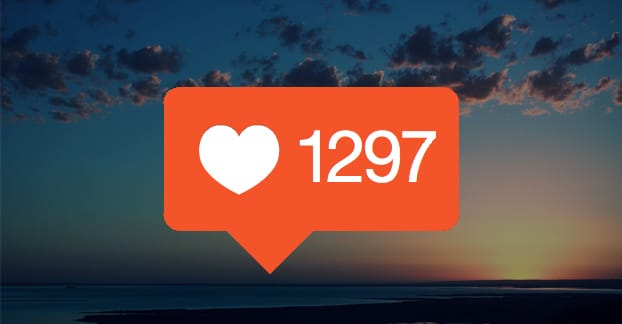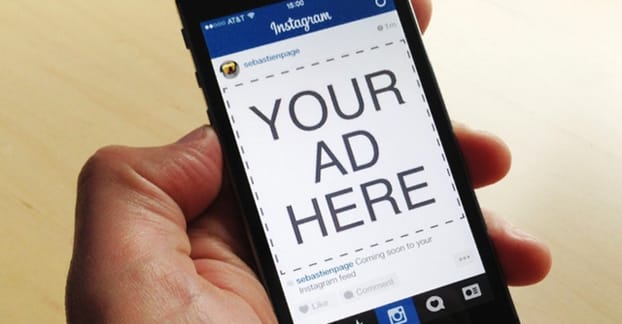Instagram thrives on likes. The more people who like your images, the more you’re going to grow in terms of engagement and in following. Getting more likes on your images gets you more out of the site as a whole, so obviously you want to maximize your like potential.
There are two ways I often see discussed when people talk about “automatic likes” on Instagram. They are pretty broadly split between white hat and black hat techniques. On the white hat end of the spectrum are the quality tips, the hashtag tips, and everything you need to create compelling content. It’s a simple idea; post great stuff in the right places and people will like them, guaranteed. On the black hat side are the tools you can use to get likes from clickfarms and bots, likes that don’t necessarily mean anything but that can snowball into more real likes later.
In a twist from normal articles on this site, I’m going to talk about both of them. Now, normally, I don’t recommend any sort of black hat techniques. They can get you suspended or banned from the site you’re using, they can give your brand a bad reputation, and a lot of times they’re more expensive than they’re worth.
In this case, though, if you use them very sparingly and very carefully, these black hat techniques can actually help you grow. How is that? Think of it like seed money for a business. You start with a little artificial capital, which you can invest to get more, until you’ve kickstarted an engine to growth naturally.
The idea is this: use a black hat technique to get a few seeded likes on your posts, ideally from real people, or at least from accounts that look real. The likes will help you get exposure and gradually grow an organic audience. As your natural audience grows, dial back on the black hat usage, until you’re entirely white hat. You may have gotten your start with something a little illicit, but as long as you aren’t relying on it entirely, you should be good to go.
The only reason I consider this to be potentially effective is because of the site we’re talking about. Instagram isn’t going to be a source of direct sales or referrals very often. It’s more about building a brand presence, a reputation, and an image. You’re not throwing money away on a return that never happens.
Starting Black
There are a lot of different Instagram bots out there. A cursory search can show you everything from buying automatic likes for $3 a week to purchasing manual likes for $10 per 500. I don’t have any particular recommendations for these, I haven’t really tested any of them, but most of them are going to be bots.
Ideally, what you’re looking for is a service that gives you likes from real people, just in an inorganic way. What I mean is that they didn’t discover your content and like it naturally, and they don’t know or care about your account; they’re just liking your photos because you paid them to do it. However, the fact that they’re real accounts – albeit probably in India somewhere – means that you’re a lot more insulated from retribution than if you get 50 likes from InstaLikeBot01 through InstaLikeBot50.
I highly recommend starting very small. A lot of these services try to cajole you into getting thousands of likes, but if your photos only get on average a dozen or so likes, a sudden thousand out of nowhere looks highly suspicious. If you get ~12 likes normally and you buy another 15, that’s a more reasonable increase.
Ideally, you’re going to get a handful of likes and those likes are going to get other people to come in and see what all the fuss is about. They’ll like you too, since obviously you’re posting great content, you just hadn’t been recognized yet.
Eventually, you can scale back so that you’re down to 50% or less of your total likes coming from the service, and then even more than that. By the time you’re averaging a couple hundred likes per post, they should all be organic. Sure, that’s not a huge number of likes, but it’s a good starting audience. You can use it to grow without fear of being penalized for using black hat techniques.
Some general tips for finding and using such a service:
- Start small. This is partially to test so you don’t waste any money, no matter how little, and partially to make sure you’re keeping a natural looking like profile.
- Test each service you’re interested in using. Monitor the likes that are coming in. If they look like bots, or otherwise look very unnatural, drop the service and find another one.
- Don’t go all-in with thousands or tens of thousands of likes. It takes a lot of work to build up to that level, so a newcomer starting out with those kinds of numbers is very suspicious.
- Be prepared for the worst to happen. It’s entirely possible that whatever service you choose isn’t properly protecting itself and will get its clients banned. Using a black hat service is always a risk, no matter how well you try to use it.
Turning Gray
While you’re still using the black hat services, you want to implement some best practices so you can attract real users and get real likes as well.
Fake likes are a fine buffer, but they won’t actually do anything to grow your brand or business.
- Take good photos. You don’t need to be a professional photographer, but you should at least know the basics of composition and editing. Feel free to take photos with a DSLR and edit them on a computer before putting them on your phone to upload. Just because Instagram only allows mobile uploads doesn’t mean you’re limited to mobile for the entire process.
- Make sure your images have context, a story, or some narrative to them. Posting a bland picture of a cat might get you a couple likes form the #cats tag, but it won’t carry your brand. You want something with more substance to it.
- Use a selection of good hashtags with your images. Unlike with Twitter, where you have limited space, or Facebook, where hashtags kill your engagement, you can use as many as you like on Instagram. Consider hashtags on Instagram to be tickets to certain audiences. Feel free to use as many as you like, though the ideal number is somewhere around a dozen. Seriously, Buffer found that the images with the most engagement had over 11 hashtags on them.
- On a related note, don’t use unrelated hashtags. If you’re posting a picture of a cat, don’t use #dogs to try to get a broader audience; they won’t like the intrusion. Using unrelated hashtags makes you look spammy or desperate.
- Make sure the rest of your profile looks good and natural. You don’t want a half-finished bio, a lack of a profile picture, or anything else to make you look like you’re trying to exploit the site.
- Stick to a handful of themes. Your brand will have some things that come naturally to it, and you can generally force one or two more. Keep within those themes so that people interested in those types of posts will follow you, rather than trying to be a generic account no one wants to follow.
Once you’ve established a pattern, you can start to grow, both with the black and the white techniques. As your organic audience grows and you get more and more organic likes, you can supplement that growth with purchased likes for a while. Once you hit a few hundred per post, you can start to taper off with the paid likes. This will make it look like your growth is stagnating on the site, but that’s a misrepresentation.
This is where looking at analytics properly is going to come in handy, particularly if you have to justify this with a boss. Instead of monitoring the number of likes on your posts as the critical metric, you should be monitoring clicks to your links and conversions. As your organic audience grows, so too will your natural engagement and your clicks and conversions. You will be able to demonstrate growth and better percentages as you taper off the paid likes. Even better, you will be able to do it while reducing costs.
Bleached White
Eventually, you will be able to wean yourself off of the black hat like buying. Once you do, it’s a prime opportunity to transition that budget into something else. Paid advertising works very well on basically every social media site, and Instagram is no exception. The Instagram advertising section can be found here and is a very good system to invest in.
Instagram is owned by Facebook, and that’s a huge benefit to you, because it means you get a lot of additional data and features, both in ad setup and in analytics, that you don’t get from other social networks. Facebook/Instagram ads are very sophisticated.
I’m not going to go deep into paid ads here, that’s for another post at another time. I’m just bringing them up because, well, you were already paying for some engagement, now you can up your budget and get more from a better audience.
At the same time, you should be working to actively engage your real audience. Now that you’re no longer focusing on fake users, you can make use of real users the way you’re not normally able to. This means engaging them by responding to their comments. It means tagging particularly influential people in the descriptions of images they might like.
The primary key here is to adapt to your audience as you grow. Study each picture you post after a few days. Which ones get more likes? Which ones get more comments? Which links in descriptions get more clicks? Try to find out what themes are working and what are not, and focus more time and energy on the themes that work. You might find that by going a little off center from your brand image, you can draw in a much larger audience. It’s worth it to make that shift and own it, so you can take advantage of that larger audience regularly.
Another thing you can start to do is run contests and other forms of user interaction feedback to hook people. Simple contests might just involve likes or comments to enter, or use follows as monitored by an app like Gleam. Other contests might involve captioning an image, filling in a blank, or even posting images using a branded hashtag.
You can also link your Instagram to your other social accounts, and your website and blog. On Facebook, sharing Instagram posts is quick and easy. It’s also easy to share on Twitter, though you may want to customize the way you do it, because the default sharing of description can be truncated or might not be attractive to a Twitter audience. On your website, you can link to your profile through social sharing buttons or links, and you can embed your individual posts into blog posts you write. All of this is beneficial to you.
By this point, you should have been able to put your shady fake likes in the past. You don’t have to go back and remove old images or block bot users, but you should no longer need to buy likes to supplement your current likes. You used them to get a foot in the door, but that’s as far as you need to take them. Once you’re growing without them, it’s insulting to your real users to be supplemented by fakes. You’ll be called on it, almost definitely, and it can hurt your brand or your account depending on how it’s done.







